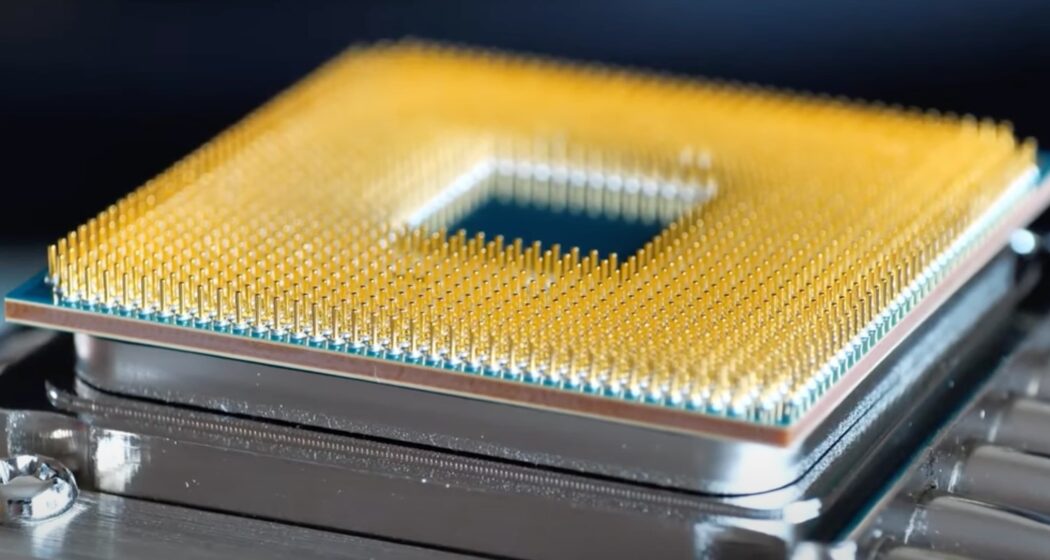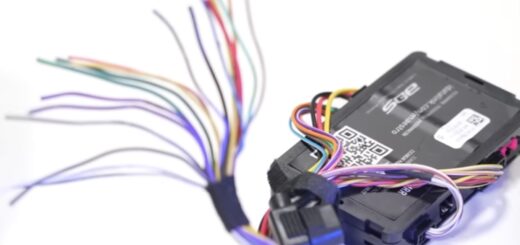Motherboard vs. CPU: Understanding the Distinct Roles
In the realm of modern computers, the interaction between hardware components resembles a symphony of intricate design and unprecedented complexity. The main protagonists of this technological opera are the motherboard and the central processing unit (CPU).
These components stand as avant-garde icons of computational power, each contributing its unique essence to the overall computational might.
In this technical exploration, we delve into the nuances of the relationship between the motherboard and CPU. We will examine their individual roles, symbiotic dynamics, and their influence on system performance.
The Motherboard: An Architectural Nexus
Think of the motherboard as the canvas upon which the tapestry of a computer system is woven:
- It’s a labyrinth of pathways, connectors, and circuits that acts as the connective tissue binding the processor and myriad other components together;
- Its dimensions and form factor define the physical limits of a computer’s construction, determining the structural layout of various elements, including RAM, expansion cards, and storage devices;
- The motherboard’s chipset, an integral architectural component, functions as a conductor organizing data exchange between the processor, memory, peripherals, and storage devices.
It hosts various types of connections, including PCIe slots, SATA ports, USB interfaces, and network interfaces, providing overall system functionality and expandability.
The CPU: The Computational Powerhouse
At the core of hardware lies the central processing unit – an undisputed leader of computation. The CPU serves as the engine executing instructions, performing calculations, and managing data flow in the system:
- Its architecture, clock speed, and core count determine computational power and efficiency;
- Modern processors come with different architectures – x86, ARM, and RISC-V – each tailored for specific tasks, from personal computers to data centers;
- The CPU’s cache hierarchy, comprising L1, L2, and L3 caches, optimizes memory access and enhances computation performance.
The continually evolving processor manufacturing technology, reaching nanometer scales, allows more transistors to be placed on a single chip, increasing computational capabilities while minimizing power consumption.

Motherboard vs. CPU Technical Differences
Understanding the technical distinctions between motherboards and processors is crucial for optimizing system performance, ensuring compatibility during upgrades, and making informed decisions when assembling or upgrading a computer system.
| Aspect | Motherboard | CPU |
|---|---|---|
| Function | Serves as the architectural backbone, connecting components and providing pathways for data exchange. | Executes instructions, performs calculations, and manages data flow, acting as the computational engine. |
| Components | Includes circuitry, connectors, chipset, memory slots, expansion slots, and various interfaces. | Comprises cores, cache hierarchy, arithmetic logic units (ALUs), registers, and control units. |
| Data Pathways | Provides data buses, such as PCIe, SATA, USB, and networking interfaces, for communication between components. | Uses data buses like front-side bus (FSB) or Direct Media Interface (DMI) for data exchange with other elements. |
| Compatibility | Determines CPU socket type and chipset compatibility, which dictates the types of CPUs that can be installed. | Compatibility relies on matching socket type between CPU and motherboard chipset. |
| Expansion | Enables expansion through PCIe slots, accommodating graphics cards, sound cards, and other peripherals. | Expansion limited to additional CPU cores, which could involve upgrading the entire CPU. |
| Memory Management | Offers memory slots for RAM installation, accommodating various types and speeds of memory modules. | Manages memory hierarchy, including L1, L2, and L3 caches, optimizing data access and performance. |
| Form Factor | Comes in various sizes (ATX, Micro ATX, Mini ITX), impacting the physical layout and size of the computer. | Variability in CPU packaging and socket design based on architecture and manufacturer. |
| Upgrade Flexibility | Upgradability extends to adding more RAM, storage devices, or expansion cards based on available slots and compatibility. | Limited upgrade potential for CPU; improvements usually involve replacing the entire CPU. |
| Overclocking | Motherboards can offer features to overclock the CPU by adjusting clock speeds and voltages. | CPUs can be overclocked to increase clock speeds for enhanced performance, but with thermal and stability considerations. |
| Data Speed and Bandwidth | The motherboard determines the speed and bandwidth of data transfer between components, impacting overall system performance. | CPU architecture, clock speed, and cache hierarchy influence the speed at which instructions are executed and data is processed. |
Symbiosis
In the intricate world of computing, where electrons dance through silicon pathways, the symbiotic relationship between the motherboard and CPU takes center stage. This dynamic duet is not a mere coincidence but a delicate choreography of data, orchestrating the flow of information that powers the entire system.
Let’s delve into the captivating partnership underlying the motherboard and CPU relationship – a partnership that defines the essence of computational harmony.
Pathways of Connection
Imagine the motherboard as a sprawling metropolis, bustling with intricate streets and alleys.
- These data highways, composed of conducting pathways, form the neural pathways of the computer;
- The motherboard becomes the stage where the computational capabilities of the processor meet the outside world;
- It houses various connectors – PCIe slots, SATA ports, USB interfaces – each resembling a portal through which data enters and exits.
These gateways establish communication with peripherals, storage devices, and expansion boards, enabling the processor to tap into external resources and extend its capabilities.
Performance Implications: The Power of Synergy
In the dynamic landscape of computing, where raw data transforms into meaningful actions, the synergy between the motherboard and CPU becomes the bedrock of system performance. Their harmonious interplay orchestrates a symphony of data manipulation and execution, ultimately determining response speed and a computer’s capabilities.
By delving into the intricacies of the motherboard and CPU interaction, we unveil the true power of their collaboration and its profound implications for overall performance.
Balancing Bandwidth
Picture the motherboard as a network of highways, each representing a separate data transmission path. These pathways determine the rate at which data travels between the processor and various components, such as memory, storage, and peripherals. The bandwidth of these pathways is akin to lanes on a highway – the wider they are, the more data can flow concurrently. The speed at which the processor accesses required data directly impacts its instruction execution.
A motherboard equipped with high-speed data transmission channels ensures swift data delivery to the waiting processor cores, enabling them to perform calculations and execute instructions at full capacity. Therefore, with the right choice of data pathways, the potential of the processor becomes not just theoretical but actual, leading to real gains in speed and efficiency.
RAM and Enhanced Data Handling
Random Access Memory (RAM) serves as an interim storage where the processor places and manipulates data. The motherboard’s ability to support high-speed RAM modules further amplifies this synergy.
When fast RAM combines with optimized data pathways, the processor doesn’t stall while awaiting data, thus boosting multitasking efficiency, gaming, and resource-intensive applications. When the processor and RAM collaborate, the system’s overall responsiveness significantly increases.
Complex Calculations and Seamless Execution
Modern computations involve intricate algorithms, modeling, and calculations. These processes demand rapid data access for the processor to perform its tasks. A well-designed motherboard minimizes data retrieval delays, allowing the processor’s computational potential to be fully harnessed. The intricate dance of data transmission pathways between the motherboard and processor transforms complex computational tasks into seamless execution, unlocking performance levels previously unreachable.
Fine-Tuning for Maximum Impact
Overclocking, the practice of increasing a processor’s clock frequency, vividly illustrates the direct impact of motherboard-CPU synergy on performance. A stable overclock requires a motherboard with a robust power system and efficient data transmission channels. Limited data pathways between the processor and other components hinder the potential of overclocking.
However, a motherboard offering favorable conditions for high-speed data exchange allows the processor’s clock frequency to be effectively boosted, resulting in substantial performance gains.
Motherboard and CPU: An Integral Duo
In the realm of computing, the motherboard and processor aren’t isolated entities but integral components of a unified whole. Much of the system’s responsiveness, computational power, and overall efficiency depend on their interaction. Grasping this interaction enables users to make informed decisions when configuring or upgrading their systems.
Evolving Interaction for Elevated Performance
As technology evolves, the interaction between the motherboard and processor remains a paramount factor, driving computational performance to new heights and transforming data into actions with remarkable precision.
Motherboard and CPU Communication: The Nexus of Data Flow
In the intricate landscape of modern computing, where electrons traverse circuits at astonishing speeds, the link between the motherboard and central processor takes center stage. This intricate dialogue, akin to a digital signal ballet, organizes the flow of data that sustains the entire system.
Understanding the nuances of the motherboard and processor interaction is paramount to comprehending the essence of computational efficiency and the dynamic interplay of these foundational components.
Pathways of Interaction
Envision the motherboard as an expanding urban panorama brimming with information highways and bustling intersections. These electric highways, resembling channels for digital information transmission, allow the processor to interact with diverse components—memory modules, storage devices, and expansion cards. Crucial in this communication are strategically positioned connectors and ports integrated into the system board. Peripheral Component Interconnect Express (PCIe) slots, Serial Advanced Technology Attachment (SATA) ports, and Universal Serial Bus (USB) interfaces become the conduits through which the processor communicates, each offering distinct capabilities and speeds.
Data Buses: The Language of Exchange
The interplay between the system board and processor is facilitated by specialized data buses reminiscent of intricate linguistic structures. One such example is the Front-Side Bus (FSB), which acts as a bridging link between the processor and system memory. This bus ensures seamless data exchange between the processor’s computational might and the data repository within the memory.
In more modern architectures, a comparable role is played by the Direct Media Interface (DMI) interface, connecting the central processor with peripheral components and high-speed storage drives like Solid-State Drives (SSDs).
Processor Sockets: The Dance of Compatibility
The processor socket is a complex component that embraces the processor into the motherboard’s architecture. Just as dancers must synchronize with their partners, the design and specifications of the processor socket must align with the processor’s architecture. This ensures a reliable and efficient connection, allowing the processor to seamlessly interface with the data transmission channels of the motherboard.
Compatibility charts for processor sockets become vital reference materials during upgrades and system builds, ensuring their harmonious integration.
Clocks and Synchronization: Timing Matters
Communication isn’t solely about data transmission; it’s also about choosing the right timing. These clock signals provide coordinated and orderly data exchange.
Multi-Core Processors and Motherboard’s Role
Modern processors are often equipped with multiple cores, enabling parallel task execution. In this scenario, the motherboard’s role is akin to that of a traffic regulator, ensuring unobstructed data flow to the appropriate core.
Data pathways need to be extensive and efficiently designed to offer multiple communication channels, thereby optimizing the processor’s ability to handle simultaneous tasks.
Conclusion
The motherboard and central processor are pivotal players, each contributing its part in shaping system performance. The motherboard serves as the architectural foundation where components are placed and interconnected, while the central processor acts as a computational engine executing a vast array of instructions.
Together, they perform a data dance that determines responsiveness and operational efficiency. Grasping the technical intricacies of motherboard-processor interaction is crucial for optimizing performance, making informed upgrade decisions, and navigating the labyrinth of the modern computing world.




















